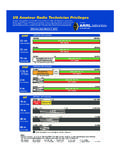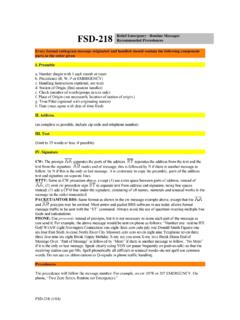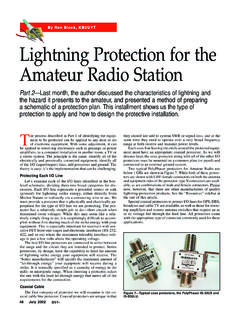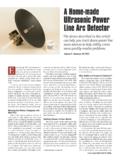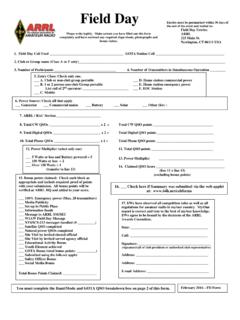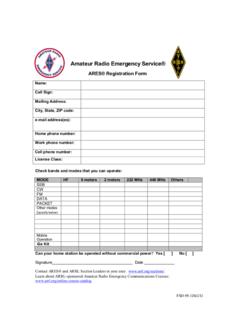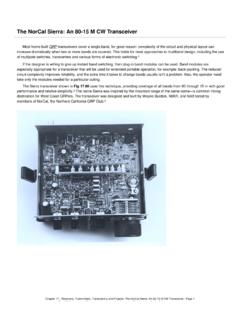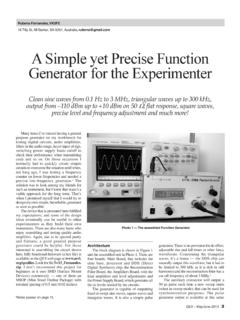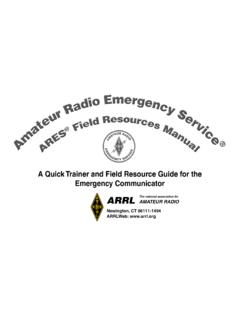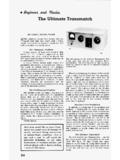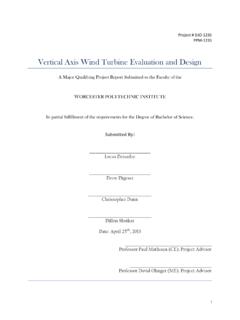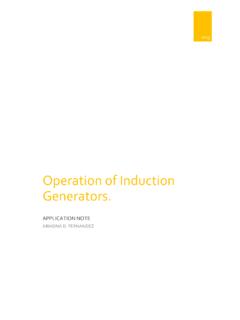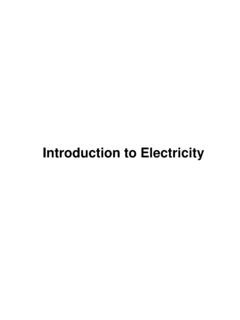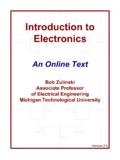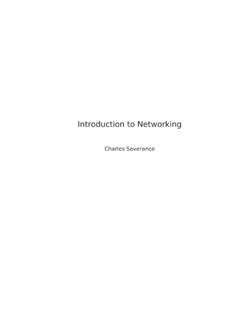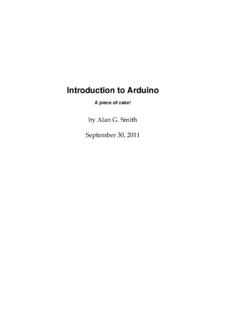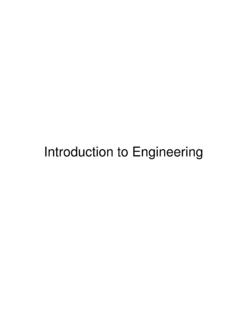Transcription of The ARRL Ham Radio License Manual
1 IAll you need to become anAmateur Radio OperatorSecond EditionMaty Weinberg, KB1 EIB, Editorial Assistant David Pingree, N1 NAS, Senior Technical Illustrator:Jodi Morin, KA1 JPA, Assistant Production Supervisor: LayoutSue Fagan, KB1 OKW, Graphic Design Supervisor: Cover DesignMichelle Bloom, WB1 ENT, Production Supervisor: LayoutBy Ward Silver, N AXContributing EditorMark Wilson, K1 ROARRL Education Services ManagerDebra Johnson, K1 DMJP roduction StaffARRLThe national association forAMATEUR RADIOTM225 Main Street, Newington, CT 06111-1494 Ham Radio License ManualFront Cover Photo (Bottom Right): S. Khrystyne Keane, K1 SFAThe ARRLiiCopyright 2010 byThe American Radio Relay League, IncCopyright secured under the Pan-American ConventionAll rights reserved. No part of this work may be reproduced in any form except by written permission of the publisher. All rights of translation are in USAQ uedan reservados todos los derechosISBN10: 0-87259-083-6 ISBN13: 978-0-87259-083-0 Second EditionFirst PrintingThis book may be used for Technician License exams given beginning July 1, 2010.
2 QST and the arrl Web site ( ) will have news about any rules changes affecting the Technician class License or any of the material in this strive to produce books without errors. Sometimes mistakes do occur, however. When we become aware of problems in our books (other than obvious typographical errors), we post corrections on the arrl Web site. If you think you have found an error, please check for corrections. If you don t find a correction there, please let us know, either using the Feedback Form at the back of this book or by sending e-mail to 1 Welcome to Amateur Radio Foreword When to Expect New Books The Adventure Begins Your Invitation to arrl Membership How to Use this Book1 Welcome to Amateur Radio What is Amateur Radio ? 1-1 The FCC and Licensing 1-12 Amateur Radio Activities 1-14 Getting Your Ham Radio License 1-192 Radio and Signals Fundamentals Radio Signals and Waves 2-1 Modulation 2-6 Radio Equipment Basics 2-113 electricity , Components, and Circuits electricity 3-1 Components and Units 3-6 Types of Radios and Radio Circuits 3-154 Propagation, Antennas, and Feed Lines Propagation 4-1 Antenna Fundamentals 4-5 Feed Lines and SWR 4-8 Practical Antenna Systems 4-115 Amateur Radio Equipment Transmitters and Receivers 5-1 Digital Communications 5-8 Power Supplies and Batteries 5-14 RF Interference (RFI)
3 5-18 RF Grounding 5-23iv6 Communicating With Other Hams Contact Basics 6-1 Band Plans 6-9 Making Contacts 6-11 Using Repeaters 6-15 Nets 6-20 Emergency Communications 6-24 Special Activities, Modes and Techniques 6-297 Licensing Regulations Licensing Terms 7-1 Working with the FCC 7-9 Bands and Privileges 7-10 International Rules 7-16 Call Signs 7-188 Operating Regulations Control Operators 8-1 Identification 8-3 Interference 8-6 Third-Party Communications 8-8 Remote and Automatic Operation 8-10 Prohibited Transmissions 8-119 Safety Electrical Safety 9-1 RF Exposure 9-5 Mechanical Safety 9-1110 Glossary11 Technician Class Exam Question Pool Syllabus 11-1 Subelement T1 FCC Rules 11-3 Subelement T2 Operating Procedures 11-15 Subelement T3 Radio Waves 11-21 Subelement T4 Amateur Radio Practices 11-27 Subelement T5 Electrical Principles 11-31 Subelement T6 Electrical Components 11-39 Subelement T7 Station Equipment 11-48 Subelement T8 Operating Activities and Modes 11-58 Subelement T9 Antennas & Feed Lines 11-66 Subelement T0 Safety 11-70
4 Supplement Choosing a Ham Radio Amateur Radio Vendor AdvertisementsvNew Ham DeskARRL Headquarters225 Main StreetNewington, CT 06111-1494(860) 594-0200 Prospective new amateurs call:800-32-NEW-HAM (800-326-3942)You can also contact us via e-mail: check out ARRLWeb: to the diverse group of individuals who make up Amateur Radio ! There are nearly 700,000 amateurs, or hams, in the United States alone and 3,000,000 around the world. Hams come from all walks of life, all ages and every continent. Hams are busily communicating without regard to the geographic and political barriers that often separate humanity. This is the power of Amateur Radio to communicate with each other directly, without any other commercial or government systems. Amateur Radio was born along with Radio itself. Marconi, the father of Radio , considered himself an amateur and many of the wireless technologies and systems we take for granted today had their origins in the workshops and imaginations of amateurs.
5 Governments make room for Amateur Radio when valuable Radio spectrum is allocated because they know and respect the flexibility and inventiveness of hams, as well as the amateur s legendary ability to innovate and adapt in the face of emergencies and came to Amateur Radio from many walks of life and many interests. Perhaps you intend to provide emergency communications for yourself and your community. Technical experimentation might be your interest or you might be one of the burgeoning do-it-yourself community, discovering the pleasures of building, testing, using and learning. Making new friends via the Radio , keeping in touch as you travel or exploring where a wireless signal can take you these are all valuable and valued parts of the Amateur time-honored ham tradition is that of helping newcomers learn about the ways and skills of Amateur Radio . These helpers known as Elmers by other hams are everywhere. You are almost certainly near another ham and probably an entire ham Radio club!
6 They ll gladly help you get started. There s more information in Chapter 1 about connecting with them. If you need assistance, the staff here at arrl Headquarters will be more than happy to help, you read this book, getting ready to pass your first ham Radio licensing exam, you will find that there is a lot more material than just the answers to exam questions. That s the arrl way of going the extra mile to help you learn about Amateur Radio . Of, By and For the Amateur is the arrl s motto. By providing this extra information, we help you learn the why behind each question so that you are prepared when ready to get on the air. Keep this book handy as a reference to help you understand how ham Radio works and you ll have more fun and be a more effective active Radio amateurs in the United States are arrl members. They realize that since 1914, the arrl s training, sponsorship of activities and representation both nationally and internationally are second to none.
7 The book you re read-ing now, The arrl Ham Radio License Manual is just one of many publications for all levels and interests in Amateur Radio . You don t need a License to join the arrl just be interested in Amateur Radio and we are interested in you. It s as simple as that!David Sumner, K1 ZZChief Executive OfficerNewington, ConnecticutMarch 2010viCongratulations! You ve taken your first step into a hobby and a service that knows no limits. Amateur Radio is a worldwide network of people from various cultures, united by a common love of wireless com munication. Amateur Radio is as old as Radio itself, and its future is no less fantastic than its past. For most people, Amateur Radio is a lifelong pursuit. We want to make sure you get a good start, which is why we ve published this book. But first, who are we ? Help for New Hams: Are you a beginning ham looking for help in getting started? The hams at arrl HQ in Newington, Connecticut, will be glad to assist you.
8 Call 800-32-NEWHAM. arrl maintains a computer data base of ham clubs and ham Radio helpers from across the country who ve told us they re interested in helping beginning hams. There are probably several clubs in your area! Contact us for more information. Licensing Classes: If you re going to become a ham, you ll need to find a local License exam opportunity sooner or later. arrl Registered Instructors teach licensing classes all around the country, and arrl -sponsored Volunteer Examiners are right there to administer your exams. To find the locations and dates of Amateur Radio Licensing classes and test sessions in your area, call the New Ham Desk at 800-32-NEWHAM. Clubs: As a beginning ham, one of the best moves you can make is to join a local ham club. Whether you join an all-around group or a special-interest club (repeaters, DXing, and so on), you ll make new friends, have a lot of fun, and you can tap into a ready reserve of ham Radio knowledge and experience.
9 To find the ham clubs in your area, call HQ s New Ham Desk at 800-32-NEWHAM. Technical Information Service: Do you have a question of a technical nature? (What new ham doesn t?) Contact the Techni-cal Information Service (TIS) at HQ. Our resident technical experts will help you over the phone, send you specific information on your question (antennas, interference and so on) or refer you to your local arrl Technical Coordinator or Technical Specialist. It s expert information and it doesn t cost Members an extra cent! Regulatory Information: Need help with a thorny antenna zoning problem? Having trouble understanding an FCC regula-tion? Vacationing in a faraway place and want to know how to get permission to operate your ham Radio there? HQ s Regulatory Information Branch has the answers you need! The Adventure Begins! arrl Operating Awards: Like to collect wallpaper ? The arrl sponsors a wide variety of certificates and Amateur Radio achievement awards.
10 For information on awards you can qualify for, contact the Membership Services Department at HQ. Equipment Insurance: Insurance is available to protect you from loss or damage to your amateur station, antennas and mobile equipment by lightening, theft, accident, fire, flood, tornado and other natural disasters. Amateur Radio Emergency Service: If you re inter-ested in providing public service and emergency communications for your community, you can join more than 25,000 other hams who have registered their communications capabilities with lo-cal Emergency Coordinators. Your EC will call on you and other ARES members for vital assistance if disaster should strike your community. Contact the Field Services Department at HQ for information. With your membership you also receive the monthly jour-nal QST, the source for ham Radio information, clever technical tips, equipment reviews, projects, Public Service, Happenings and arrl also publishes newsletters and dozens of books covering all aspects of Amateur Radio .
